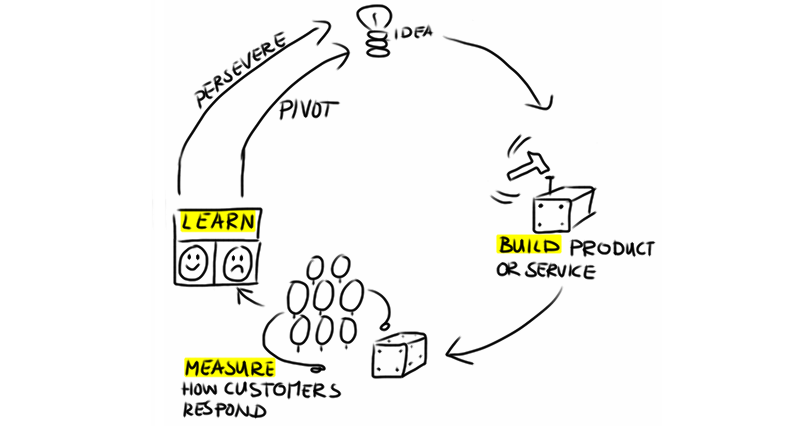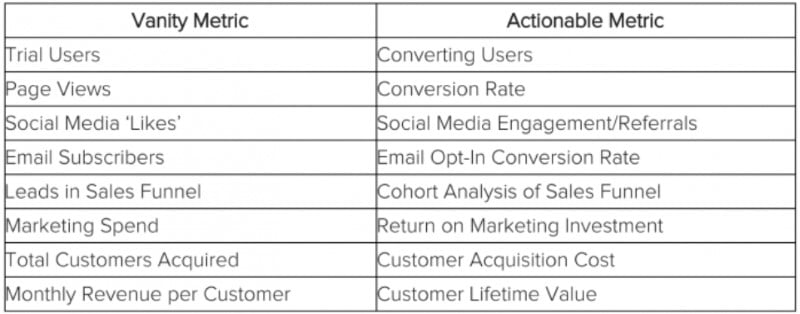The Lean Startup gives us the strategies for effective product & operations teams, key for building influential Australian startups. We distill the key lessons from Eric Ries’ book.
Lean Startup by Eric Ries is the definitive guide to bootstrapping a startup business, focusing on speeding up development cycles and rapidly creating, testing, and refining business models. The Lean Startup is focused on rapid development cycles with minimal friction, and is essential reading for any entrepreneur building an Australian startup.
Many entrepreneurs are drawn to the idea of launching their own startup. Startup leaders get to create their own business and are accountable only to themselves, and in many cases experience exponential growth. Launching a startup in Australia, however, is hard work and principles from the Lean Startup help to ensure your development & operations teams are as effective as they can be.
In this article, we’ll present the 10 key takeaways from Eric Ries’ Lean Startup that can help you achieve your startup goals faster and more efficiently.
1. Adopt a Startup Mindset
The Lean Startup begins by outlining the first three elements that a startup must consider before launch, the first of which is a management model. In Lean Startup, Ries contrasts traditional management models and the dynamic management techniques used by successful startup leaders.
Traditional management models are based on a linear, predictive mindset in which managers create plans, establish milestones, and guide employees to ensure tasks are performed correctly. This strategy, argues Ries, is suitable only for established businesses that possess a tested, proven business model.
The startup management mindset, according to Lean Startup, should be nonlinear and adaptive. Startup managers can’t create predictive models on customer requirements, because they don’t know what their customers want. Startup management should focus on maintaining a constant overview of the position of a business, operating in a holistic manner.
To achieve this, a startup needs to identify the key metrics that will guide them in the right direction.
2. Identify a Sustainable Business Model
The primary goal of any Australian startup is to identify a sustainable, profitable business model. Regardless of how well-planned your business plan is and how much you’re prepared to invest in marketing, your startup won’t succeed unless you can identify a method of capturing new customers and generate income by serving and retaining them.
The number one priority for any startup is sustainability. To identify a sustainable and effective business model, a startup must find out which products their target demographic wants, and determine how best to convert their desire into revenue.
Discovering your business model means learning. Lean Startup introduces the concept of “validated learning” — following an empirical model of hypothesis, experiment, analyze, and review. Lean Startup advises startups to create real-world experiments with real customers that validate their hypotheses, discovering the ideal business model through trial and error.
3. Take a “Leap of Faith”
The Lean Startup defines faith as a key ingredient in the recipe for startup success. Startup founders believe in the success of their product and business plan despite the total lack of evidence to support it. In order to close the gap between belief and concrete proof, every startup founder needs to formulate and test two hypotheses:
- Value hypothesis
The value hypothesis assumes that early adopters will discover and embrace a product based on the value it delivers. - Growth hypothesis
The growth hypothesis dictates that if products are discovered and embraced by early adopters, expansion into a larger market share as time proceeds is inevitable
Both hypotheses must be ideated and tested as soon as possible. It’s only possible to launch a successful startup if a product has been validated.
4. Launch Your MVP
A common mistake made by many startup founders is developing a product in isolation. The most innovative product in the world can’t be sold if there are no customers that will buy it. Determining the level of demand for your product is critical.
The fastest and simplest method of assessing real-world demand for a product and capturing feedback is developing a stripped-back version of it — a minimal viable product, or MVP. The MVP should deliver only the bare essentials necessary to give a realistic impression of how a product will work.
Developing and releasing an MVP allows startups to test their product in the marketplace as soon as possible.
5. Build, Measure, & Learn
Building and testing effective business models and gauging consumer demand by releasing MVPs yields important data. Performing these tests is irrelevant if this data isn’t collected, analyzed, and adapted to.
The Lean Startup introduces the concept of Build, Measure, and Learn, or BML, as a learning and adaptation model. The BML loop consists of three elements:
- Build your MVP: the Build element of the BML loop means creating a prototype, minimum viable product, or a smoke test that can be released to prospective consumers.
- Measure the response: Once you’ve taken your MVP to market, assess and record the consumer response to your release. Collect qualitative data that measures consumer interest in the product such as click-through and conversion rates alongside real review data from your customers.
- Learn from the data: The data collected during the BML loop should be analyzed and incorporated in the next iteration of product design.

The Lean Startup BML loop is focused on speed and observation. Each iteration of the Build Measure Learn loop delivers deeper insight into what customers want and how best to deliver it to them.
6. Optimize Your Product
Products are not static — the product offering presented by a business will grow and evolve as the business evolves. Lean Startup states that startups must enhance the features customers want, and strip back the ones they don’t.
Refining and optimizing a product means distinguishing between value and waste. The best way to determine which features are wasteful and which features deliver value is to perform a split-test. Lean Startup recommends that startups release two different products when updating and experimenting with feature sets: one product that incorporates feature changes, and one that doesn’t.
A startup performing a split-test will assess the performance of each product in order to test potential product changes before implementation.
7. Find the Right Model & Pivot to it
Many startup founders operate under the mistaken assumption that startup success is defined by perseverance and a willingness to push through obstacles with an iron will. Startup success, however, is not defined by rigidity, but by adaptation.
Startup founders must constantly question the effectiveness of their product and the business model that supports it. Constantly considering the potential benefits of a major pivot or fundamental change allows founders to assess the effectiveness of their product in the marketplace.
A major pivot can result in many changes — some startups may choose to redefine the demographic to which their product is market, while others could replace their primary sales channel. The core axiom of a major pivot is that the assumptions responsible for the initial growth have changed, and so must the business itself.
Lean Startup recommends establishing a monthly pivot meeting in which business leaders assess BML data and discuss the potential benefits of a pivot.
8. Focus on a Single Growth Engine
All startups are driven by a growth engine that ensures the startup itself does not stagnate. Lean Startup breaks engines of growth down into three different categories:
- Sticky engines function by retaining existing customers, generating a reliable stream of income. Sticky engines are focused on retaining and upselling users by offering better features and services
- Viral engines engage the customers of a startup to do their marketing for them. Viral engines deliver word-of-mouth exposure and exponential marketing effectiveness
- Paid engines invest in marketing channels such as paid online advertising. The paid engine is only effective when cost per acquisition is lower than lifetime customer value
Early-stage startup founders should focus on a single growth engine at launch, and slowly introduce other engines of growth as their business matures.
9. Ignore Vanity Metrics
Many startups seek guidance from metrics in order to understand their current position and gauge their progress toward long-term goals. Vanity metrics, however, can lead startup leaders astray and prevent them from tracking progress that matters.
Lean Startup defines vanity metrics as social media attention or Facebook fans. While these metrics may be indicative of a modicum of consumer interest, they typically don’t result in sales, and therefore don’t pay the bills. Other vanity metrics include the amount of time a startup has committed to their project thus far or the total number of milestones accomplished.

While vanity metrics are flattering, they are misleading — it’s important to focus only on metrics that push your startup toward your goals.
10. Define & Analyze Your Core Metrics
The final key takeaway from Lean Startup is the importance of core metrics. Ries defines core metrics as tangible, real-world data that ultimately increases the number of paying customers. These metrics include the number of recommendations or referrals generated by a customer, average session length, or the behaviors of new customers versus older customers.
Every startup needs to define, track, and analyze the core actionable metrics that help them create a successful business model.
Developing a successful startup model and tracking the right data is key to success in an agile successful startup. If you’re focused on improving the financial efficiency of your startup, get in touch with Fullstack for strategic CFO services.
Was this article helpful?
Related Posts
- Startup Funding
Getting your startup funding is an essential skill for most tech startup founding teams. However…
- Startup Accounting Policies
Startups often have unique business models which can raise difficult questions about the most appropriate…
- Product Market Fit
Product market fit is when an entrepreneur has established the optimum product for their target…
- ESIC Eligibility for Startup Founders
The ESIC regimes has many tax benefits that can incentivise investors. As such, founders should…

















